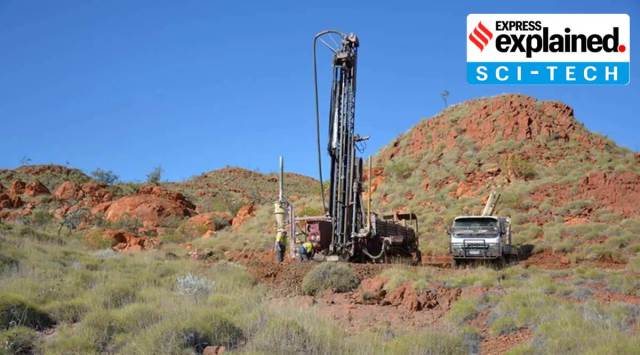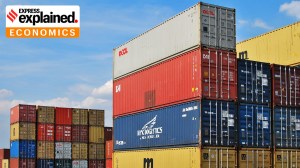- India
- International
Explained: What are rare earth elements, and why is India keen to join a global alliance to ensure their supply?
A group of western nations are cooperating to develop alternatives to China to ensure key industrial supplies. India is not part of this arrangement — called the Minerals Security Partnership (MSP). What is India’s major concern at this moment?
 Industry watchers say that the reason India would not have found a place in the MSP grouping is because the country does not bring any expertise to the table
Industry watchers say that the reason India would not have found a place in the MSP grouping is because the country does not bring any expertise to the tableAs part of a global ‘China-plus-one’ strategy adopted post the Covid-19 pandemic that caused massive supply-chain disruptions, a group of western nations are cooperating to develop alternatives to China to ensure key industrial supplies. A new US-led partnership initiative of 11 nations aims to bolster critical mineral supply chains. India is not part of this arrangement — called the Minerals Security Partnership (MSP) — but New Delhi is working through diplomatic channels to fetch an entry.
What is the Minerals Security Partnership (MSP)?
The US and 10 partners — Australia, Canada, Finland, France, Germany, Japan, the Republic of Korea (South Korea), Sweden, the United Kingdom, and the European Commission — have come together to form the MSP. The new grouping is aimed at catalysing investment from governments and the private sector to develop strategic opportunities.
“Demand for critical minerals, which are essential for clean energy and other technologies, is projected to expand significantly in the coming decades. The MSP will help catalyse investment from governments and the private sector for strategic opportunities — across the full value chain — that adhere to the highest environmental, social, and governance standards,” the US State Department said in a statement issued on June 14.
The new grouping, industry insiders say, could focus on the supply chains of minerals such as Cobalt, Nickel, Lithium, and also the 17 ‘rare earth’ minerals. The alliance is seen as primarily focused on evolving an alternative to China, which has created processing infrastructure in rare earth minerals and has acquired mines in Africa for elements such as Cobalt.
What are rare earth elements?
The 17 rare earth elements (REE) include the 15 Lanthanides (atomic numbers 57 — which is Lanthanum — to 71 in the periodic table) plus Scandium (atomic number 21) and Yttrium (39). REEs are classified as light RE elements (LREE) and heavy RE elements (HREE).

Some REEs are available in India — such as Lanthanum, Cerium, Neodymium, Praseodymium and Samarium, etc. Others such as Dysprosium, Terbium, and Europium, which are classified as HREEs, are not available in Indian deposits in extractable quantities. Hence, there is a dependence on countries such as China for HREEs, which is one of the leading producers of REEs, with an estimated 70 per cent share of the global production.
According to the US Geological Survey, supplies from China had started to become erratic as early as 1990, as Beijing kept changing the amounts that it would allow to be produced and exported. Also, according to the USGS, the Chinese government began to limit the number of companies, both Chinese and Sino-foreign joint ventures, that could export REEs from China.
Why are these minerals important?
Minerals like Cobalt, Nickel, and Lithium are required for batteries used in electric vehicles. REEs are an essential — although often tiny — component of more than 200 consumer products, including mobile phones, computer hard drives, electric and hybrid vehicles, semiconductors, flatscreen TVs and monitors, and high-end electronics. India is seen as a late mover in attempts to enter the lithium value chain, coming at a time when EVs are predicted to be a sector ripe for disruption.
The year 2022 is likely to be an inflection point for battery technology — with several potential improvements to the Li-ion technology, with alternatives to this tried-and-tested formulation being in advanced stages of commercialisation. India has an ambitious plan to convert a large percentage of its transport to electric, and would require these minerals. According to the plan, 80 per cent of the country’s two- and three-wheeler fleet, 40 per cent of buses, and 30 to 70 per cent of cars will be EVs by 2030.
What is India’s major concern at this moment?
“If India is not able to explore and produce these minerals, it will have to depend on a handful of countries, including China, to power its energy transition plans to electric vehicles. That will be similar to our dependence on a few countries for oil,” an economist said.
Industry watchers say that the reason India would not have found a place in the MSP grouping is because the country does not bring any expertise to the table. In the group, countries like Australia and Canada have reserves and also the technology to extract them, and countries like Japan have the technology to process REEs.
More Explained
EXPRESS OPINION
Apr 18: Latest News
- 01
- 02
- 03
- 04
- 05








































